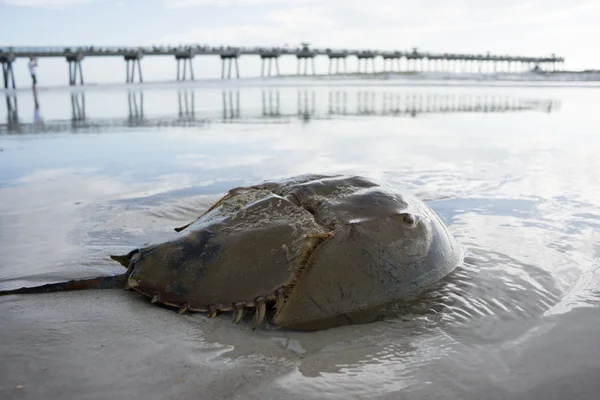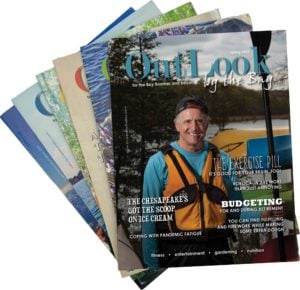
Horseshoe crabs save human lives. Their copper-based blue blood clots in the presence of endotoxins — harmful bacterial substances that cause diseases. This unique property means that the blood can assess the sterility and safety of medical devices, drugs, and vaccines. The burgeoning market for vaccines, including for Covid, has increased demand for the blood. That may put horseshoe crabs at risk.
Often called “living fossils,” horseshoe crabs predate the dinosaurs, and they haven’t changed much over the eons. More closely related to spiders and cockroaches than to true crabs, they’re an important part of marine ecosystems. If you’ve seen one on the beach, chances are that “beautiful” wouldn’t be the first adjective that springs to mind. With their hard upper shells and long pointed tails, they resemble small tanks with lance-like weapons systems. But these are not offensive creatures, in battle or on the beach. They trundle along, mostly underwater, using five pairs of jointed legs and 10 eyes to scrounge up seabed sustenance.
When they do come ashore, it’s usually to make new horseshoe crabs. In late spring they crawl up beaches in masses — perhaps a million a day — to mate over a three-to-four-day period coinciding with a new or full moon. With males vying for their affections, females may mate several times, producing about 80,000 eggs in a season. Delaware Bay is ground zero for these amorous spring breakers, but Chesapeake Bay also sees its share. Their fecundity sates the appetites of migrating shorebirds, notably sandpipers, ruddy turnstones, and red knots. These birds gorge themselves on the energy-rich eggs.
Horseshoe crabs were once so abundant that few worried about their conservation. No longer. Shoreline development, habitat destruction, and harvesting the crabs for bait has pushed some species to threatened or endangered status. The Atlantic horseshoe crab, Limulus polyphemus, is prized bait for the eel, whelk, and conch fishery. When Delaware Bay crab harvests shot up in the 1990s scientists tallied unsustainable declines in crab populations and linked the harvests to plummeting numbers of red knots. Despite subsequent bait harvesting restrictions, populations of horseshoe crabs have not rebounded to previous levels and red knot numbers continue to diminish. This has turned attention to another potential culprit — the biomedical industry.
When horseshoe crabs are taken for their blood, 30 percent of the blood is drained before the crabs are returned to the sea. In 2021 about 700,000 crabs were harvested; the number may be double that today. Though the intent is to spare the animal, the process causes stress. Scientists estimate that 15 percent of collected crabs die Ñ perhaps as many as 200,000 a year, about one fifth of the annual U.S. bait fishery harvest. Given that 20 million horseshoe crabs populate Delaware Bay alone, this mortality might seem small, but the stress from collecting and bleeding has other costs, including impaired reproduction.
Harvesting crabs at night and more humane handling can diminish stress and mortality. But it’s hard to monitor and enforce best practices, and the demand for horseshoe crab blood — worth some $60,000/gallon — keeps growing. Fortunately, there’s another way to detect endotoxins.
The unique clotting property of horseshoe crab blood in the presence of bacterial toxins is due to a chemical called Limulus amebocyte lysate. Decades ago, researchers developed a synthetic alternative to LAL, a recombinant reagent known as rFC. While rFC is used in many countries, the United States has been slow to adopt it, even though U.S.-based Eli Lilly has been marketing the synthetic product for years. But this may be changing.
The United States Pharmacopeia is a not-for-profit organization that sets national product quality standards for drugs and drug ingredients. USP recently announced that they have developed a standard for rFC that will make it easier for companies to use the synthetic alternative. The standard is scheduled to take effect in 2024.
Will this help restore horseshoe crab populations — and the shorebirds that depend on their eggs? Time will tell. And other factors, including habitat degradation and harvesting for bait, may be more important. But we would all do well to better appreciate these important and interesting sea creatures. The next time you see one on the beach, you might even give it a pet.

Let's keep in touch!
Keep up with the latest OutLook by the Bay information by signing up here. We promise not to waste your time.

